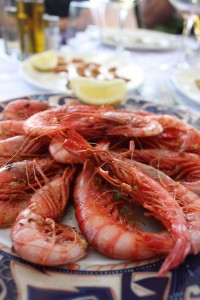Eating in Spain: Menu Tips
 Paella, tortilla de patatas and churros con chocolate: we all know these famous Spanish dishes, but surely these are not enough to feed our craving for Spanish gastronomy? Dig a little deeper and you’ll see that Spanish gastronomy is extremely diverse and versatile. Although menus in most tourist restaurants tend to feature the same old dishes, there is a lot more to Spanish food than paella and tortillas. At these tourist-oriented establishments, menus are always translated to English and even other languages such as German and Japanese. But for the adventurous ones out there, venture into little alleys and hard-to-find local taverns, and you’ll be in serious need of your Spanish dictionary. Here are some tips to help you order in restaurants in Spain:
Paella, tortilla de patatas and churros con chocolate: we all know these famous Spanish dishes, but surely these are not enough to feed our craving for Spanish gastronomy? Dig a little deeper and you’ll see that Spanish gastronomy is extremely diverse and versatile. Although menus in most tourist restaurants tend to feature the same old dishes, there is a lot more to Spanish food than paella and tortillas. At these tourist-oriented establishments, menus are always translated to English and even other languages such as German and Japanese. But for the adventurous ones out there, venture into little alleys and hard-to-find local taverns, and you’ll be in serious need of your Spanish dictionary. Here are some tips to help you order in restaurants in Spain:
- Most restaurants in Spain offer a ‘menu del día’ for lunch. It’s an excellent deal: a 3-course set lunch that’s usually more affordable than ordering a la carte. Their average prices are around 10 to 25€. For the first-timer in Spain, I would suggest trying out the menu del día for your first few meals as you get to sample a few local dishes and get familiarized with the flavors. For the appetizers (entrante), you can usually choose from salads (ensalada), soups (sopa), pasta or even paella (although standards of paella on menu del días are usually compromised). For the main dish (plato principal), the selection ranges from beef steak (solomillo/chuleta de ternera) to oxtail stew (rabo de toro) to fried seafood platter (fritura de mariscos). The meal will be washed down with coffee and a desert (postre) – usually flan, fruit salad (Macedonia de frutas) or ice-cream (helado).
- Menus are usually displayed according to food types – salads (ensaladas), tapas (small platters), pastas, fish/seafood – usually categorized together (marisco), meat (carne) and desserts (postres). The standard eating practice in Spain is to order an appetizer, main dish and dessert, although of course, you are not obligated to order in that manner.
- Although these are not related to menus, I’ve included them as reminders when dining in Spain. As the Spaniards eat much later than the rest of the world, restaurant opening hours are also rather peculiar: lunch hours are from 2 to 4pm and dinner from 8 to 11pm. Be sure to stick to these hours, you’ll be surprised to find that they are all closed before or after these times. Also, the Spaniards tend to eat a heavy lunch (3-course) and a light dinner (usually a sandwich or a tapa).
- Looking for a light meal? Sandwiches (bocadillos) are in the form of thick, crispy baguettes – popular choices are bocadillo de lomo (pork fillet sandwich) and bocadillo de calamares (calamari sandwich). Most high-end or traditional restaurants don’t serve these, so hop over to tapas bars or classic cafeterias for them.
- If you’re just out for tapas, keep in mind that they are usually very small platters. For example, a tapa of tortilla de patatas usually means a small slice of omelette (imagine a slice of cake). With that in mind, you can decide how much you’ll need to fill you up. Most people are happy to have 2 to 3 tapas per person. If you’re interested in learning more about tapas, you might be keen on joining tapas and wine tours in Madrid. For more information on tapas, don’t forget to check out our first-timer guide to tapas etiquette.
- The Spaniards tend to drink wine or beer with their meal, and most tend to think it weird to have coca cola with food. Of course it’s fine to order it in restaurants, but if you’re interested in experiencing the true Spanish culinary practices, try out a glass of Ribero del Duero (red wine) with your meal and you might be surprised to find yourself loving it. If you’re looking at ordering wine (vino), the wine list in restaurants in Spain can be extremely long. So if you’d like to save some time and just sample the house wine, simply order ‘vino de la casa’.
- For beer lovers out there, you’ll be happy to know that the variety of beers in Spain is incredible. Each city has its own brew – such as Mahou from Madrid, Cruzcampo from Seville, San Miguel from Malaga and the Alhambra from Granada. So if you’re as much a beer-drinker as I am, be sure to taste the various brews while traveling around Spain! Cider is also hugely popular in Spain, although the best ciders or sidras come from Asturias in Northern Spain.
- Having a coffee after both lunch and dinner is a common practice in Spain, but what specifically you order depends entirely on what you’re in the mood for. The traditional order is simply, ‘café solo’, which is essentially expresso. For coffee with milk, you’ll have to ask for ‘café con leche’, which is an equally popular option.